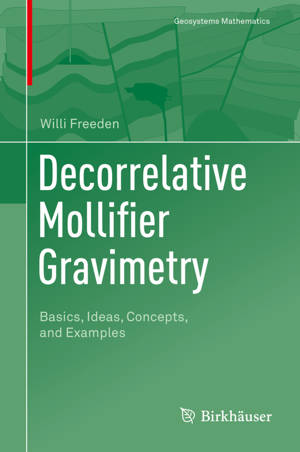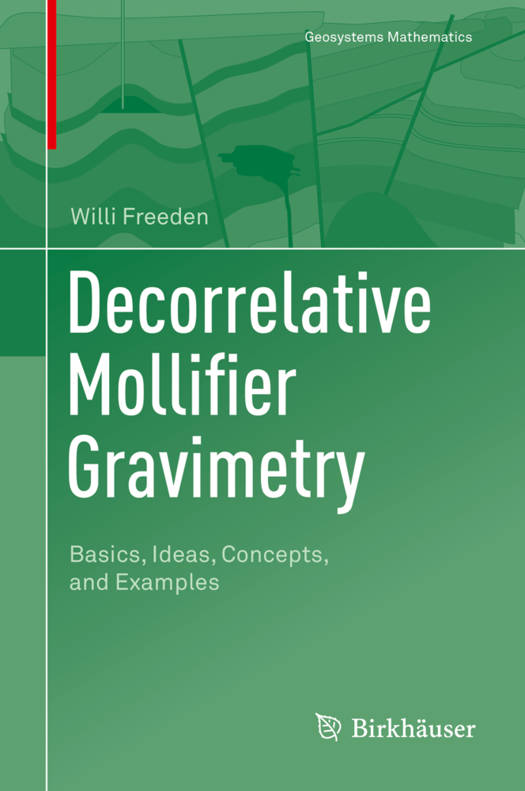
Door een staking bij bpost kan je online bestelling op dit moment iets langer onderweg zijn dan voorzien. Dringend iets nodig? Onze winkels ontvangen jou met open armen!
- Afhalen na 1 uur in een winkel met voorraad
- Gratis thuislevering in België vanaf € 30
- Ruim aanbod met 7 miljoen producten
Door een staking bij bpost kan je online bestelling op dit moment iets langer onderweg zijn dan voorzien. Dringend iets nodig? Onze winkels ontvangen jou met open armen!
- Afhalen na 1 uur in een winkel met voorraad
- Gratis thuislevering in België vanaf € 30
- Ruim aanbod met 7 miljoen producten
Zoeken
€ 168,95
+ 337 punten
Uitvoering
Omschrijving
This monograph presents the geoscientific context arising in decorrelative gravitational exploration to determine the mass density distribution inside the Earth. First, an insight into the current state of research is given by reducing gravimetry to mathematically accessible, and thus calculable, decorrelated models. In this way, the various unresolved questions and problems of gravimetry are made available to a broad scientific audience and the exploration industry. New theoretical developments will be given, and innovative ways of modeling geologic layers and faults by mollifier regularization techniques are shown.
This book is dedicated to surface as well as volume geology with potential data primarily of terrestrial origin. For deep geology, the geomathematical decorrelation methods are to be designed in such a way that depth information (e.g., in boreholes) may be canonically entered.
Bridging several different geo-disciplines, this book leads in a cycle from the potential measurements made by geoengineers, to the cleansing of data by geophysicists and geoengineers, to the subsequent theory and model formation, computer-based implementation, and numerical calculation and simulations made by geomathematicians, to interpretation by geologists, and, if necessary, back. It therefore spans the spectrum from geoengineering, especially geodesy, via geophysics to geomathematics and geology, and back.
Using the German Saarland area for methodological tests, important new fields of application are opened, particularly for regions with mining-related cavities or dense development in today's geo-exploration.
This book is dedicated to surface as well as volume geology with potential data primarily of terrestrial origin. For deep geology, the geomathematical decorrelation methods are to be designed in such a way that depth information (e.g., in boreholes) may be canonically entered.
Bridging several different geo-disciplines, this book leads in a cycle from the potential measurements made by geoengineers, to the cleansing of data by geophysicists and geoengineers, to the subsequent theory and model formation, computer-based implementation, and numerical calculation and simulations made by geomathematicians, to interpretation by geologists, and, if necessary, back. It therefore spans the spectrum from geoengineering, especially geodesy, via geophysics to geomathematics and geology, and back.
Using the German Saarland area for methodological tests, important new fields of application are opened, particularly for regions with mining-related cavities or dense development in today's geo-exploration.
Specificaties
Betrokkenen
- Auteur(s):
- Uitgeverij:
Inhoud
- Aantal bladzijden:
- 482
- Taal:
- Engels
- Reeks:
Eigenschappen
- Productcode (EAN):
- 9783030699086
- Verschijningsdatum:
- 13/05/2021
- Uitvoering:
- Hardcover
- Formaat:
- Genaaid
- Afmetingen:
- 156 mm x 234 mm
- Gewicht:
- 875 g

Alleen bij Standaard Boekhandel
+ 337 punten op je klantenkaart van Standaard Boekhandel
Beoordelingen
We publiceren alleen reviews die voldoen aan de voorwaarden voor reviews. Bekijk onze voorwaarden voor reviews.











